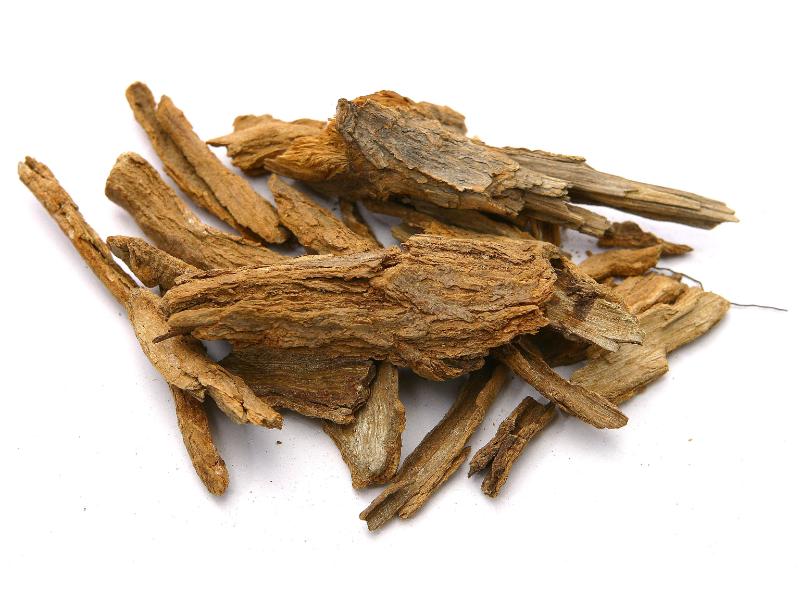Search in medicinals

Alternate English names: matrimony vine bark boxthorn bark
Alternate Chinese names: 枸杞根 <i>gǒu qǐ gēn</i>
Kingdom: Plant
Origin in PRC Pharmacopoeia: <i>Lycium chinense</i> Mill.; <i>Lycium barbarum</i> L. (<i>PRC Pharmacopoeia</i>)
Origin in unofficial sources: <i>Lycium chinense</i> Mill.*; <i>Lycium barbarum</i> L.*
Use: Medicinal
Category: Heat-clearing agents / Vacuity-heat–clearing agents
Properties: Sweet, bland; cold.
Channel entry: Lung, liver, and kidney channels.
Actions and indications:
- Abates vacuity fire and steaming bone: Yīn vacuity heat effusion,
steaming bone tidal heat effusion , and night sweating. - Drains lung fire: Lung heat cough.
- Cools the blood: Bleeding due to frenetic movement of hot blood, manifesting in vomiting of blood (blood ejection), nosebleed, or bloody urine.
- Additional actions: dì gǔ pí is also used to treat dispersion-thirst because it clears heat and drains fire from the center, and concurrently engenders liquid and relieves thirst. For this, combine it with Shēng dì huáng (生地黄 Rehmanniae Radix Exsiccata seu Recens, dried/fresh rehmannia [root]), Tiān huā fěn (天花粉 Trichosanthis Radix, trichosanthes root), and Wǔ wèi zǐ (五味子 Schisandrae Fructus, schisandra [berry]).
Dosage and method: Oral: 6–15g in decoctions.
Warnings: Unsuitable for external contraction of wind-cold with heat effusion or for spleen vacuity with sloppy stool.
Product description: This root bark comes in channeled sections or single quills of up to 12 cm in length, 2 cm wide, and 1–3 mm thick. The exterior is orange-brown, with the cork layer peeling off or having irregular fissures. The inside has a textured grain and is yellowish white, sometimes with brown speckles. This root bark is light and breaks easily, leaving a jagged fracture. The decocting pieces are fine slices.
Quality: Best are dry hard thick pieces without wood or impurities.
Production area: Hénán, Shānxī.
Etymology: The name <i>dì gǔ pí</i> 地骨皮 literally <q>earth bone bark,</q> is ascribed to the ability of the root to penetrate deep into the earth, and its ability to reach the bones (i.e., treat steaming bone).
Back to search result Previous Next